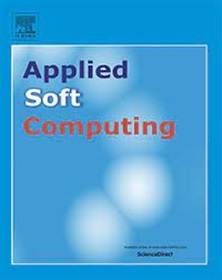Bridge crack detection algorithm designed based on YOLOv8
IF 6.6
1区 计算机科学
Q1 COMPUTER SCIENCE, ARTIFICIAL INTELLIGENCE
引用次数: 0
Abstract
Due to the complexity of the operating environment and the influence of natural factors, bridges are prone to various forms of damage, including cracks. However, traditional bridge detection methods often encounter challenges in terms of low detection accuracy and high computational resource consumption. The practical significance of accurate bridge crack inspection to society can be summarized as follows: ensuring bridge safety, preventing major accidents, maintaining bridge structural health, optimizing bridge management decisions, promoting scientific and technological progress, and enhancing public trust. The practical significance of accurate bridge crack inspection extends beyond the safety and stability of the bridge itself. It also relates to the safety of people's lives and property, as well as the harmony and stability of society. This study presents a bridge crack detection algorithm tailored around the YOLOv8 framework. Initially, the SPPF_UniRepLk module is incorporated into the algorithm's backbone network, aiming to bolster its capacity to capture and extract pertinent image features. Additionally, to further grasp the global dependencies between feature maps, a Global Channel Spatial Attention (GCSA) mechanism is introduced, which enhances the algorithm's sensitivity to global contextual information. Finally, in the neck network component of the algorithm, the Coordattention-Concat module is utilized to achieve the integration and refinement of multi-source features through nonlinear transformations and feature reweighting techniques, thereby significantly elevating the overall performance of the algorithm. The experimental outcomes demonstrate that the proposed bridge crack detection algorithm designed based on YOLOv8 achieves a mAP50–95 of 72.1 %, which is capable of accurately detecting cracks.
基于YOLOv8设计的桥梁裂缝检测算法
由于使用环境的复杂性和自然因素的影响,桥梁容易出现各种形式的损坏,包括裂缝。然而,传统的桥梁检测方法往往面临检测精度低、计算资源消耗大的挑战。准确的桥梁裂缝检测对社会的现实意义可以概括为:保障桥梁安全,预防重大事故,维护桥梁结构健康,优化桥梁管理决策,促进科技进步,增强公众信任。精确的桥梁裂缝检测的实际意义已经超越了桥梁本身的安全与稳定。这也关系到人民群众的生命财产安全,关系到社会的和谐稳定。本研究提出了一种围绕YOLOv8框架量身定制的桥梁裂缝检测算法。最初,SPPF_UniRepLk模块被整合到算法的骨干网络中,旨在增强其捕获和提取相关图像特征的能力。此外,为了进一步掌握特征映射之间的全局依赖关系,引入了全局通道空间注意(GCSA)机制,增强了算法对全局上下文信息的敏感性。最后,在算法的颈部网络组件中,利用coordination - concat模块通过非线性变换和特征重加权技术实现多源特征的集成和细化,从而显著提升了算法的整体性能。实验结果表明,基于YOLOv8设计的桥梁裂缝检测算法的mAP50-95达到了72.1 %,能够准确检测裂缝。
本文章由计算机程序翻译,如有差异,请以英文原文为准。
求助全文
约1分钟内获得全文
求助全文
来源期刊

Applied Soft Computing
工程技术-计算机:跨学科应用
CiteScore
15.80
自引率
6.90%
发文量
874
审稿时长
10.9 months
期刊介绍:
Applied Soft Computing is an international journal promoting an integrated view of soft computing to solve real life problems.The focus is to publish the highest quality research in application and convergence of the areas of Fuzzy Logic, Neural Networks, Evolutionary Computing, Rough Sets and other similar techniques to address real world complexities.
Applied Soft Computing is a rolling publication: articles are published as soon as the editor-in-chief has accepted them. Therefore, the web site will continuously be updated with new articles and the publication time will be short.
 求助内容:
求助内容: 应助结果提醒方式:
应助结果提醒方式:


